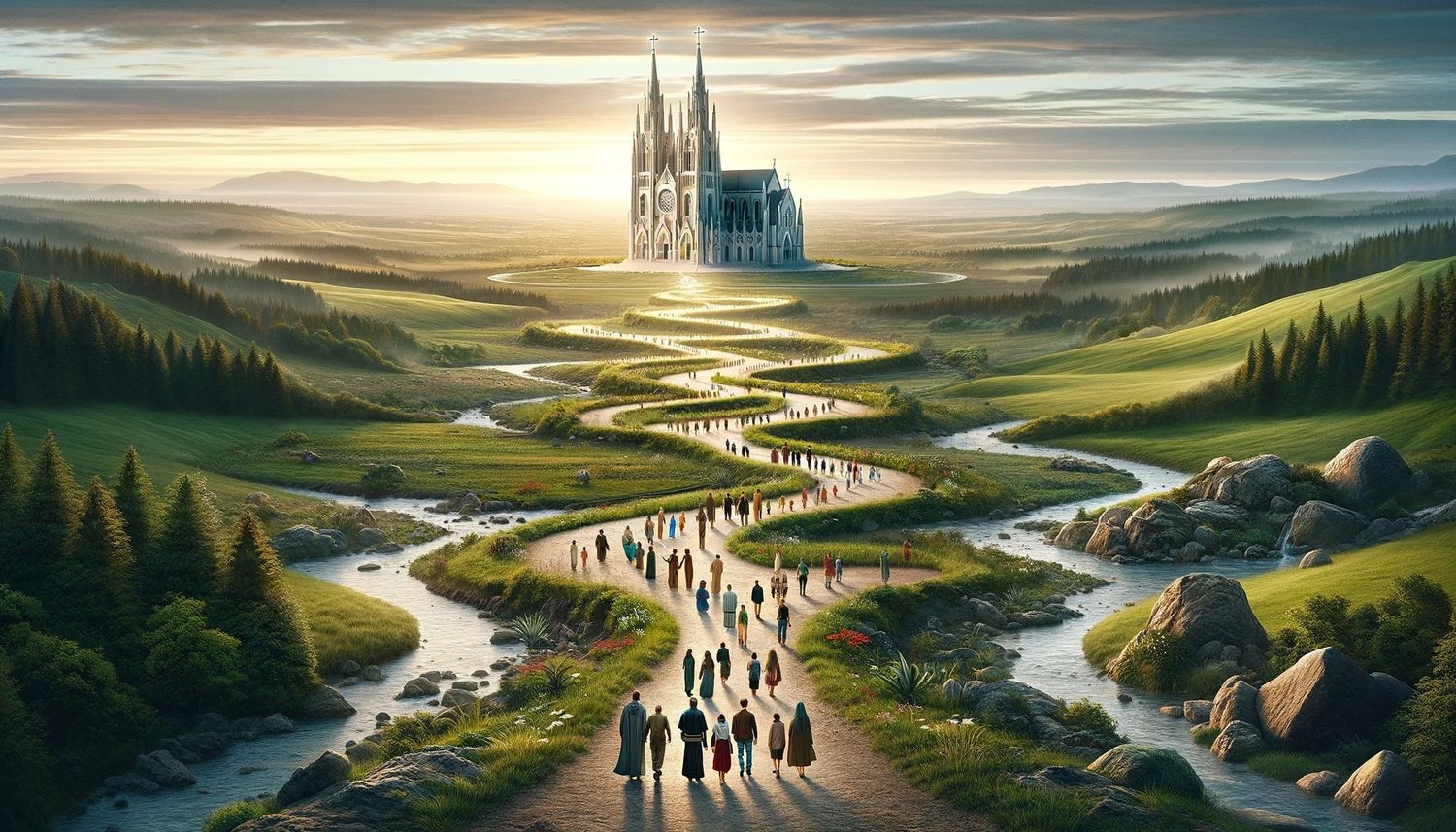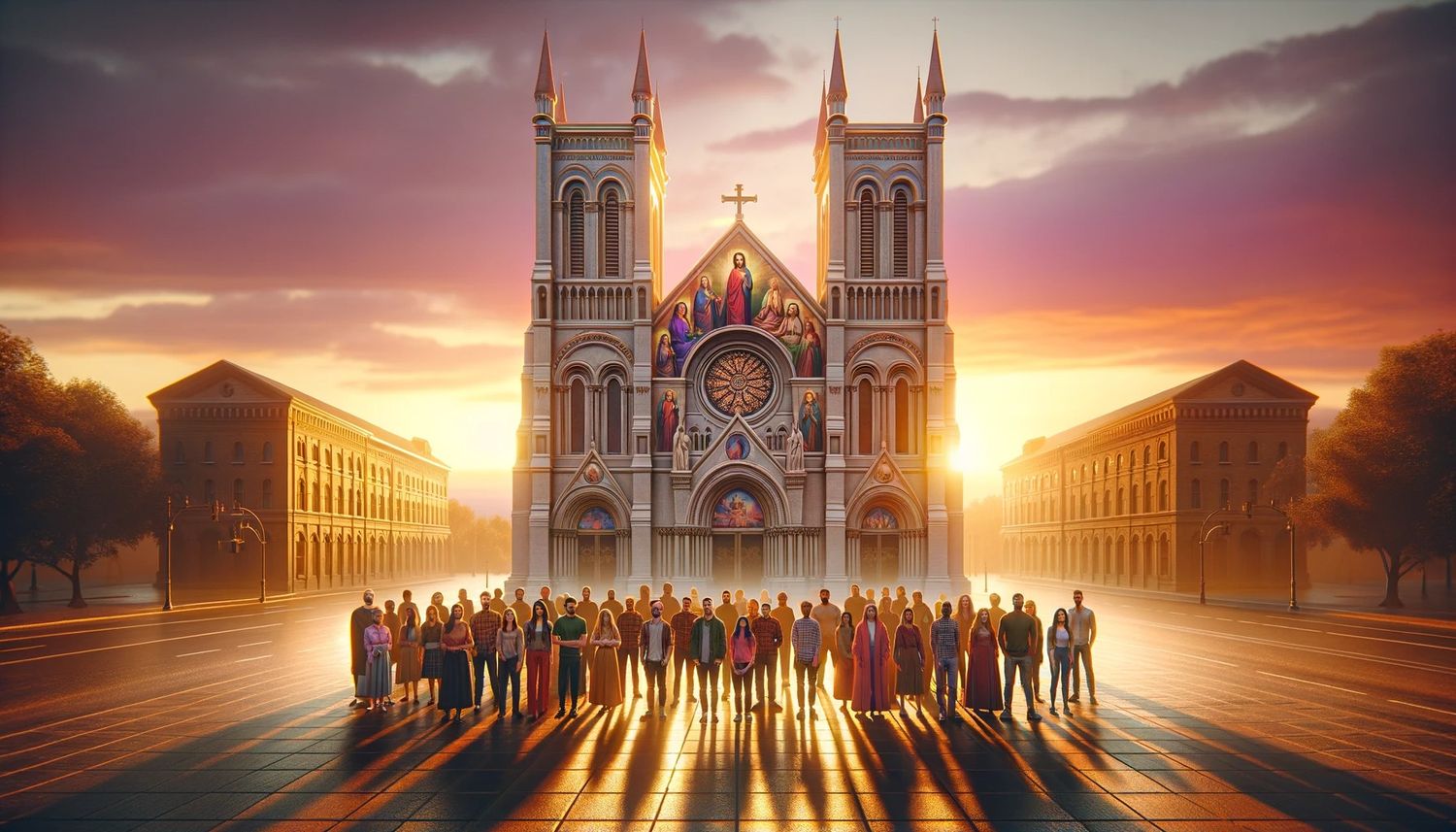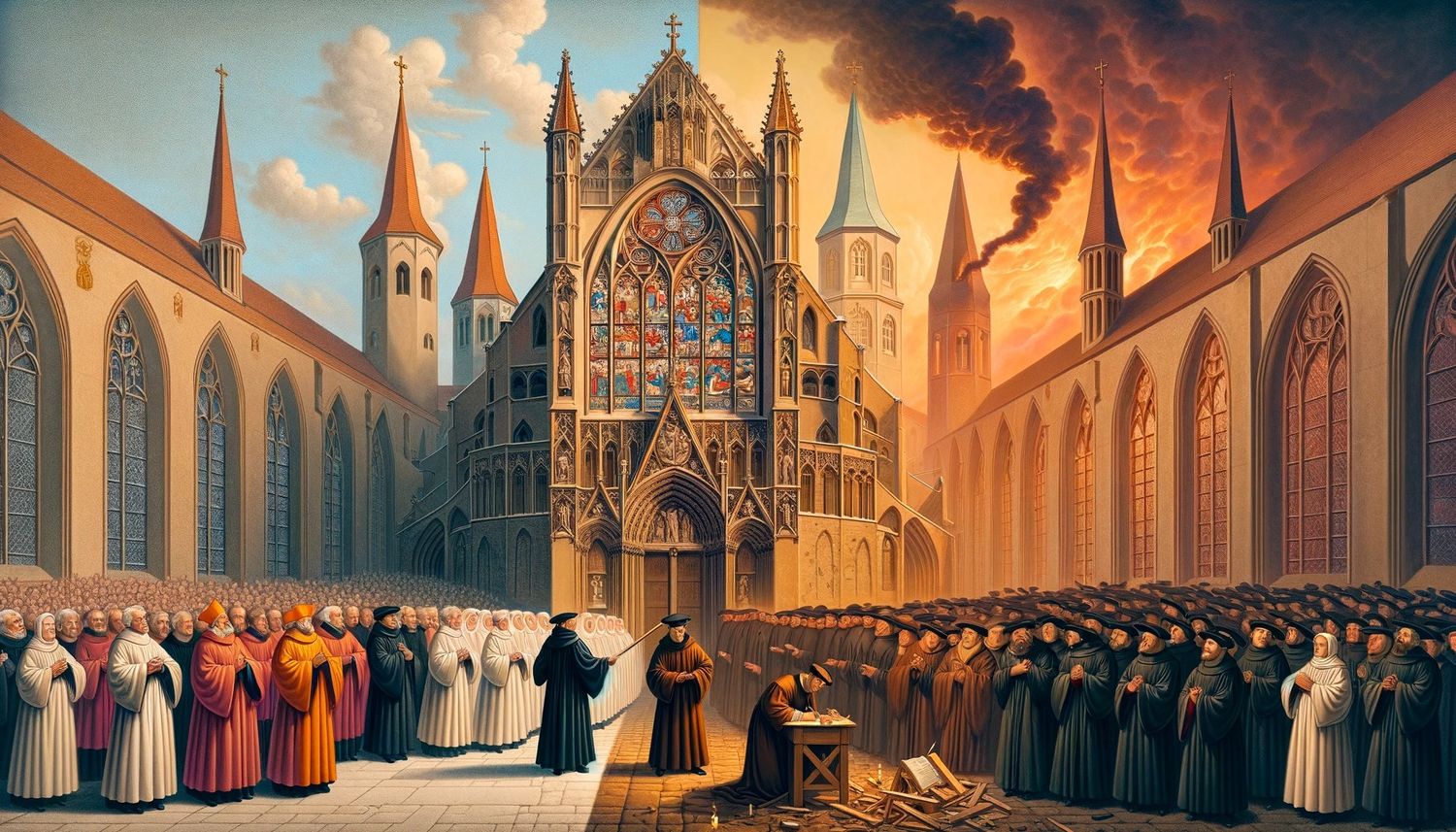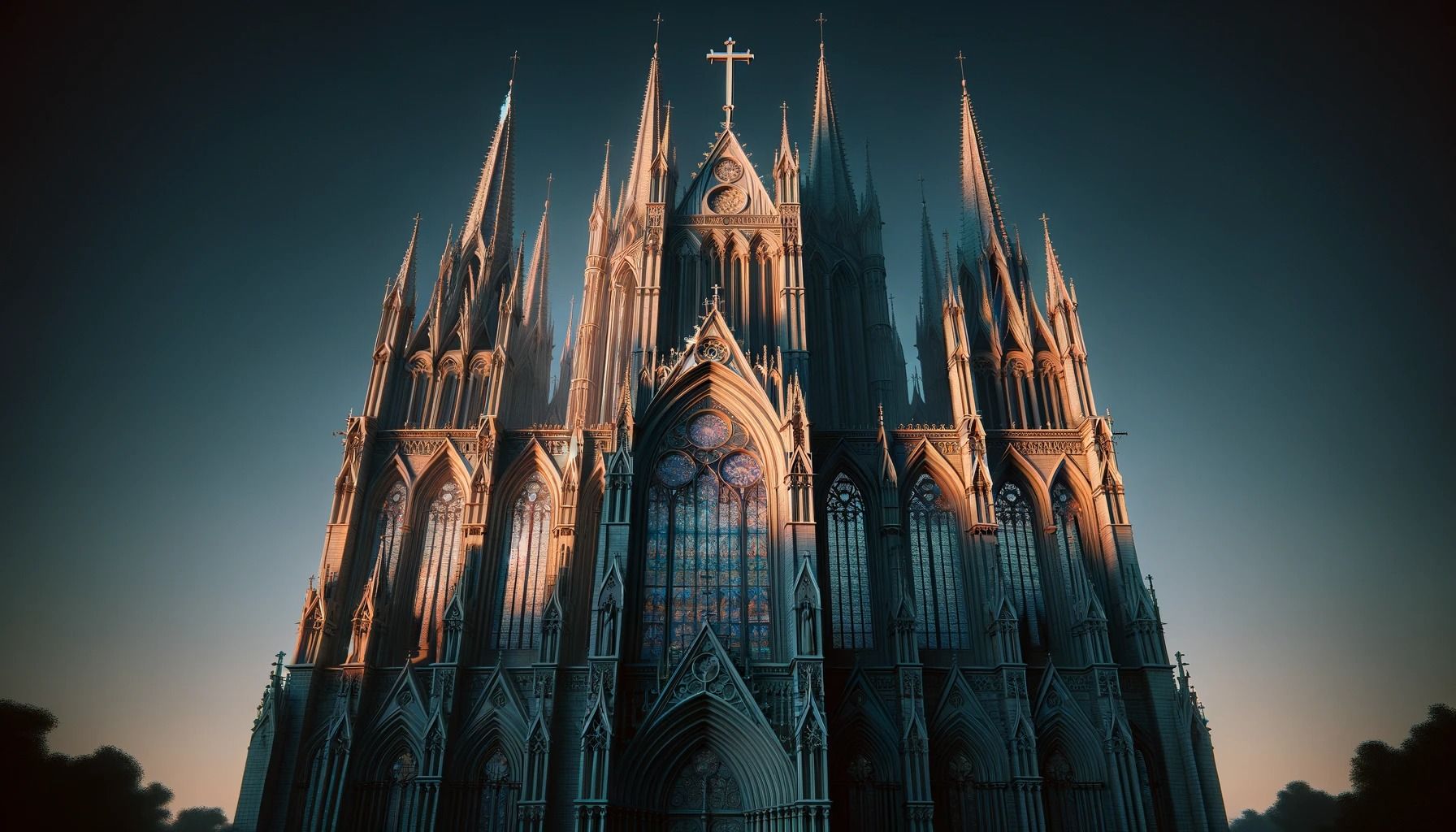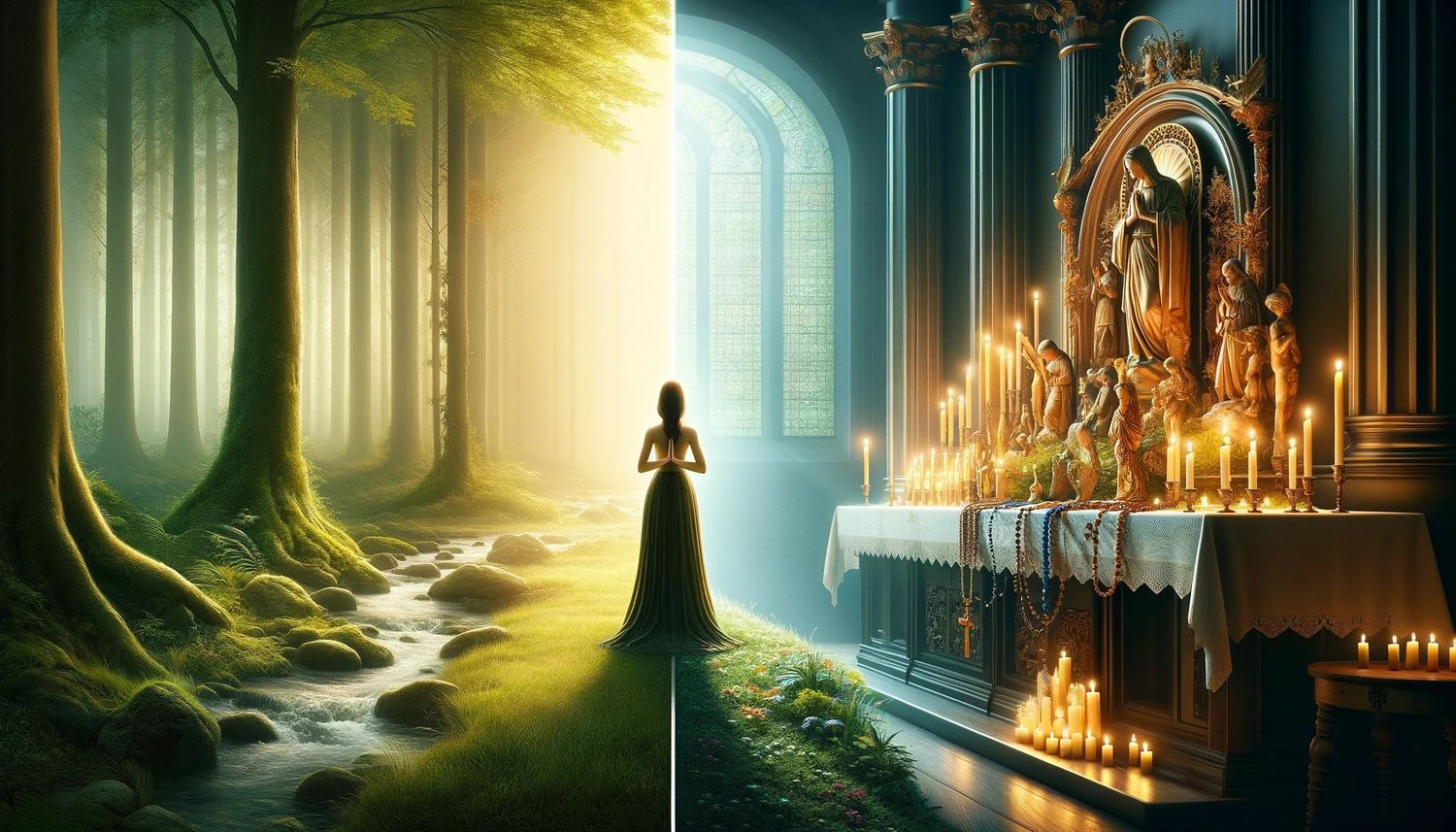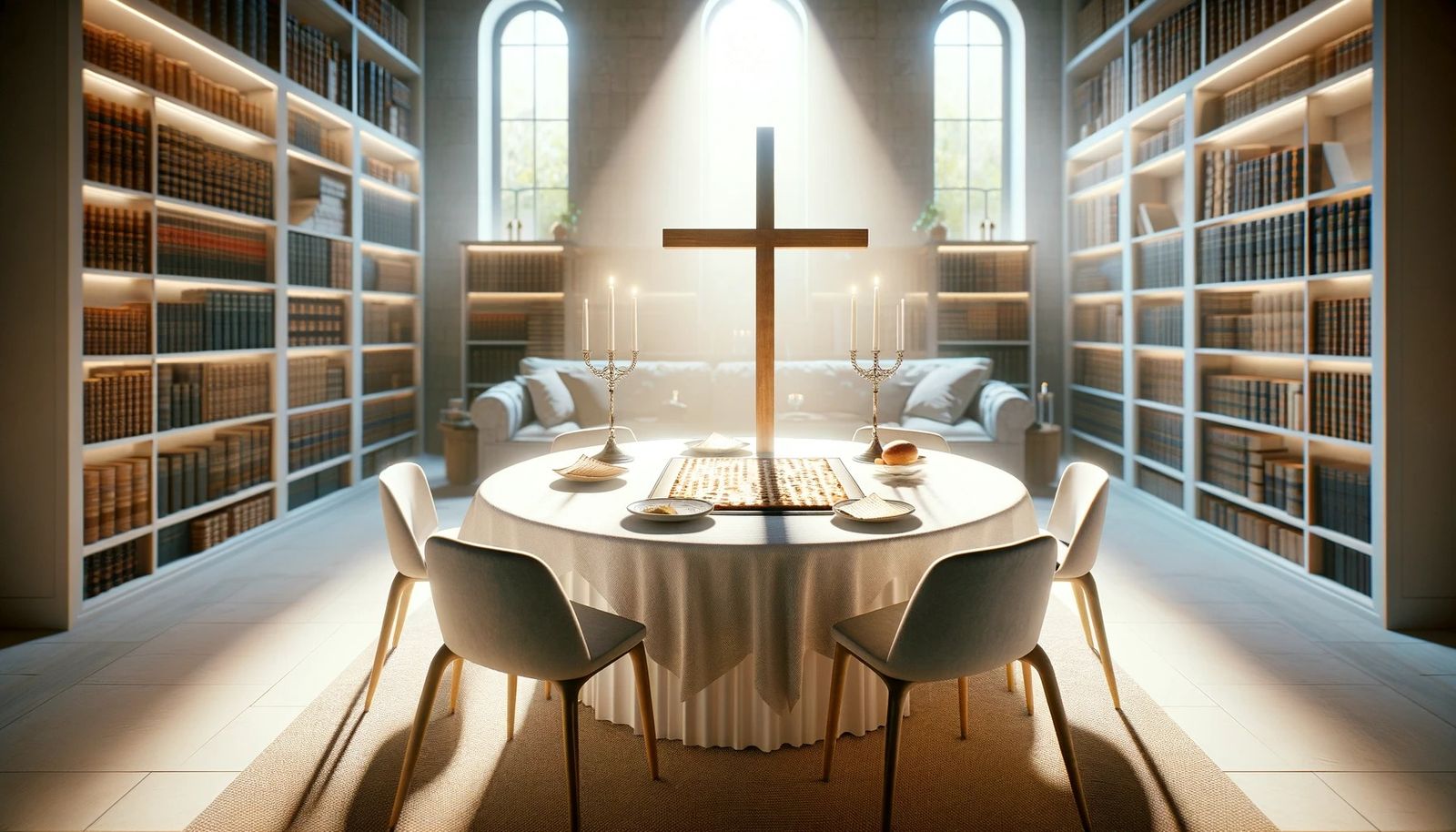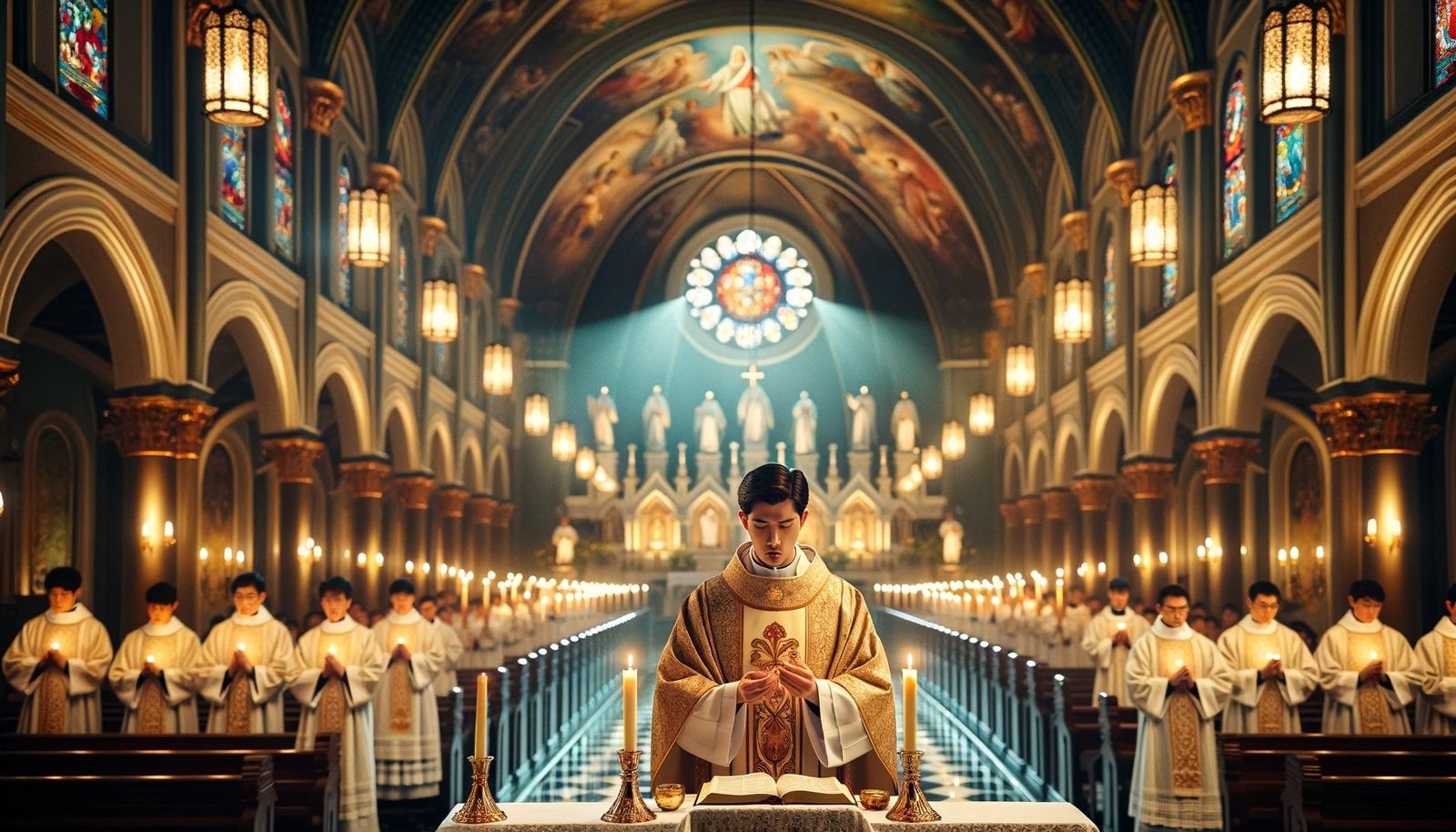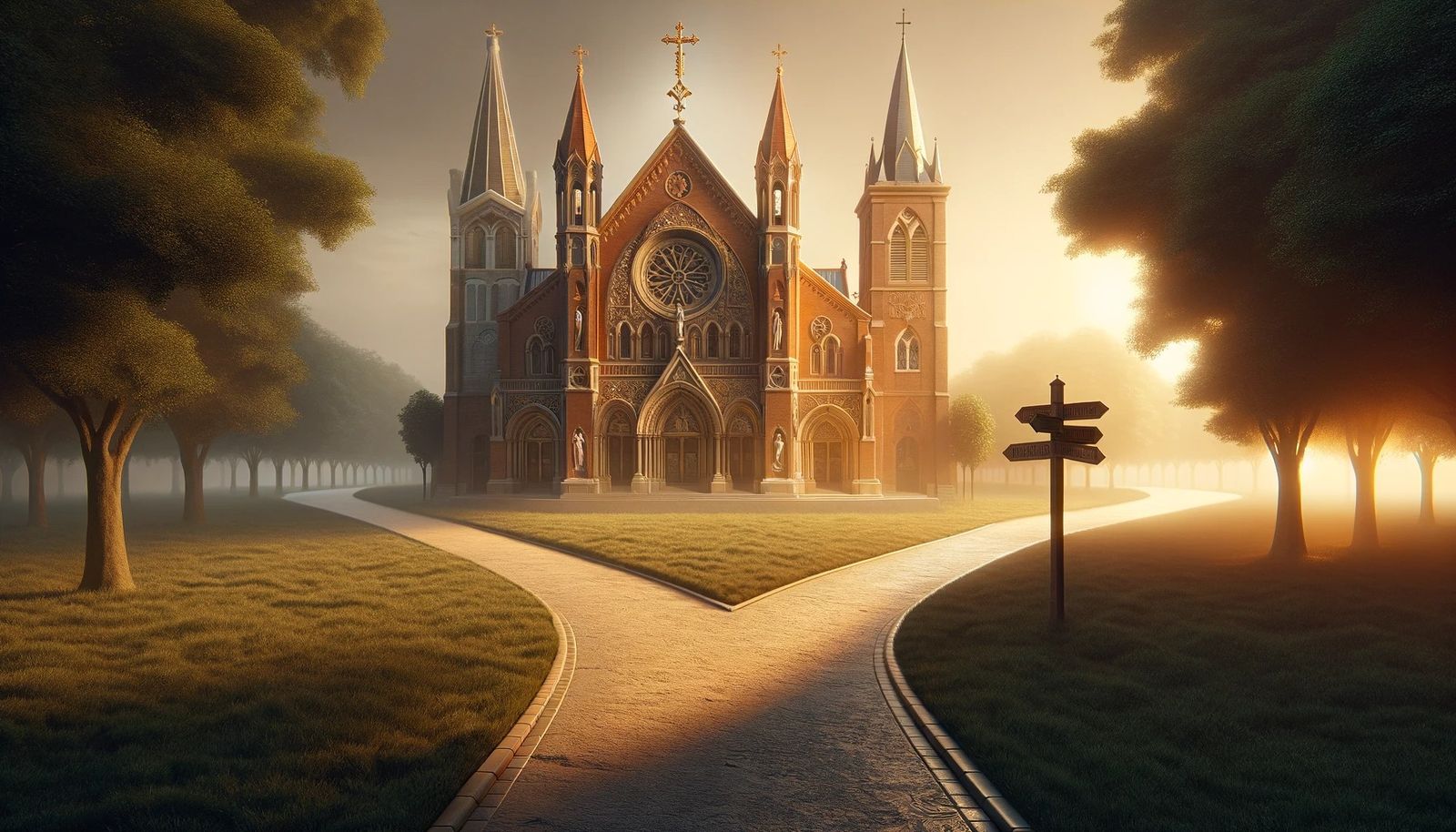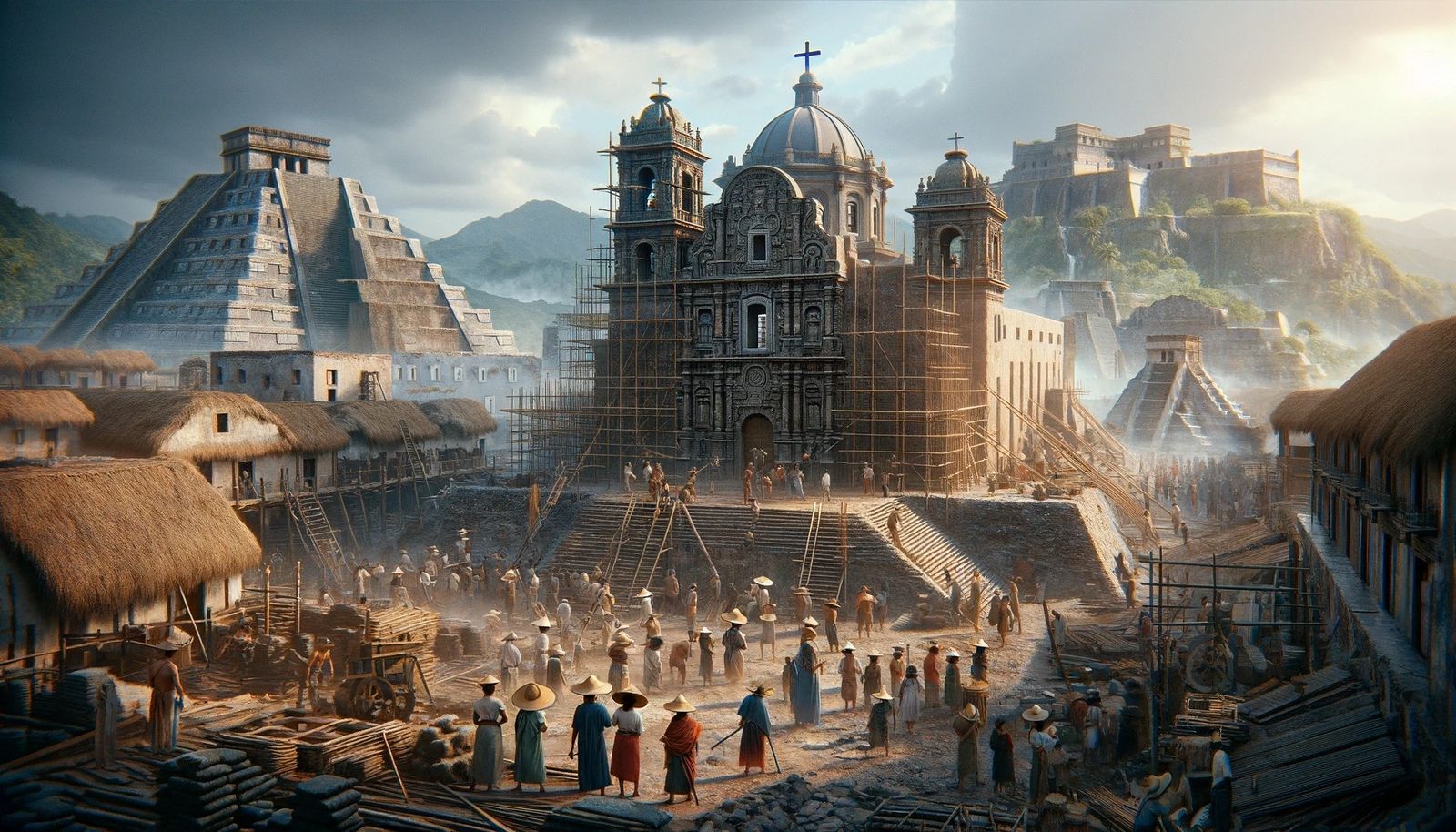Home>Theology and Spirituality>Why Catholicism Or Orthodoxy
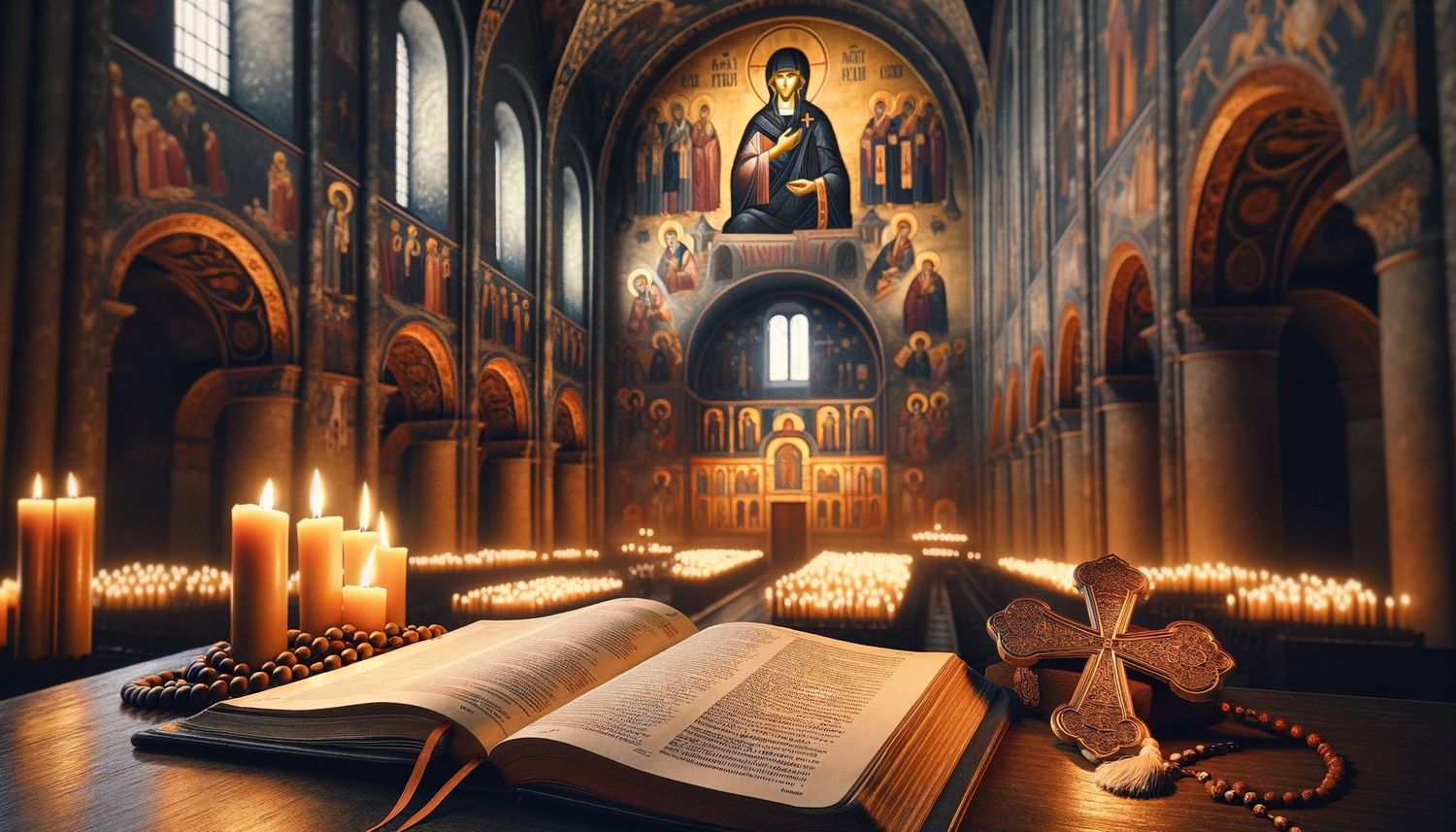

Theology and Spirituality
Why Catholicism Or Orthodoxy
Published: February 18, 2024
Ericka Andersen, an editor at Christian.net, expertly merges digital strategy with content creation, focusing on faith and societal issues. Her communication skills enhance the platform's engaging narratives, fostering meaningful dialogue on belief's impact on society.
Explore the theological and spiritual differences between Catholicism and Orthodoxy to deepen your understanding of these two prominent Christian traditions. Discover the unique perspectives and beliefs that shape each faith.
(Many of the links in this article redirect to a specific reviewed product. Your purchase of these products through affiliate links helps to generate commission for Christian.net, at no extra cost. Learn more)
Table of Contents
Introduction
Catholicism and Orthodoxy are two of the oldest and most influential branches of Christianity, each with its own rich history, traditions, and beliefs. These two branches have played pivotal roles in shaping the spiritual and cultural landscapes of numerous countries and continue to impact the lives of millions of people around the world.
As we delve into the intricacies of Catholicism and Orthodoxy, it becomes evident that both traditions share a common foundation in the teachings of Jesus Christ and the early Christian church. However, over the centuries, distinct theological, doctrinal, and cultural differences have emerged, leading to the development of separate religious identities.
Understanding the nuances of Catholicism and Orthodoxy is not only a journey through religious history but also an exploration of the diverse expressions of faith and spirituality. Both traditions have contributed immensely to art, architecture, literature, and music, leaving an indelible mark on human civilization.
In this article, we will embark on a comprehensive exploration of the history, beliefs, practices, and future trajectories of Catholicism and Orthodoxy. By shedding light on the similarities and differences between these two branches of Christianity, we aim to provide a deeper understanding of their significance and enduring influence in the contemporary world. Through this exploration, we will gain insight into the profound spiritual and cultural legacies that continue to shape the lives of millions of adherents and offer a glimpse into the future of these venerable traditions.
History of Catholicism and Orthodoxy
The history of Catholicism and Orthodoxy is deeply intertwined with the early development of Christianity. Both traditions trace their origins to the apostolic era, when the teachings of Jesus Christ began to spread throughout the Mediterranean world. The early Christian community was characterized by a diversity of beliefs and practices, and it was during this formative period that the foundations of what would later become Catholicism and Orthodoxy were laid.
Catholicism, with its center in Rome, can be traced back to the establishment of the Christian community in the city of Rome, where the apostles Peter and Paul are traditionally believed to have preached and eventually been martyred. The Bishop of Rome, who came to be known as the Pope, emerged as a central figure in the leadership of the Christian community, providing spiritual guidance and fostering unity among the faithful.
In the East, the roots of Orthodoxy can be found in the ancient Christian centers of Constantinople, Antioch, Alexandria, and Jerusalem. The early Christian communities in these regions developed distinctive liturgical practices and theological perspectives, which eventually coalesced into what is now known as the Eastern Orthodox Church.
The Great Schism of 1054 marked a significant turning point in the history of Christianity, leading to the formal separation of the Western (Catholic) and Eastern (Orthodox) branches. The schism was the culmination of centuries of theological disputes, cultural differences, and ecclesiastical tensions between the two centers of Christianity. The mutual excommunication of the Pope and the Patriarch of Constantinople symbolized the division that persists to this day.
Despite the schism, both Catholicism and Orthodoxy continued to evolve and expand, adapting to the changing political and social landscapes of Europe and the Middle East. The Catholic Church played a central role in the medieval period, exerting influence over matters of faith, governance, and education, while the Orthodox Church remained a vital force in the Byzantine Empire and later in the Slavic and Balkan regions.
The histories of Catholicism and Orthodoxy are marked by periods of triumph and tribulation, including the Crusades, the Reformation, and the challenges of modernity. Both traditions have weathered internal schisms and external pressures, demonstrating resilience and adaptability in the face of profound historical transformations.
Today, the history of Catholicism and Orthodoxy stands as a testament to the enduring power of faith, tradition, and community in shaping the course of human civilization. The legacy of these two branches of Christianity continues to inspire and provoke contemplation, inviting us to reflect on the complex tapestry of religious history and the enduring quest for spiritual truth and unity.
Beliefs and Practices
Beliefs and practices form the bedrock of both Catholicism and Orthodoxy, shaping the daily lives and spiritual experiences of their adherents. While sharing a common faith in the Triune God—Father, Son, and Holy Spirit—Catholicism and Orthodoxy have distinct theological emphases and liturgical expressions that reflect their historical and cultural contexts.
Catholic Beliefs and Practices
Catholicism places a strong emphasis on the authority of the Pope as the successor of Saint Peter and the Vicar of Christ on earth. The doctrine of papal infallibility asserts that the Pope is preserved from error when speaking ex cathedra on matters of faith and morals. This centralization of authority is reflected in the hierarchical structure of the Catholic Church, with bishops and priests serving under the Pope's leadership.
The sacramental life of Catholicism is characterized by seven key rituals, including baptism, confirmation, Eucharist, penance, anointing of the sick, holy orders, and matrimony. These sacraments are considered essential channels of God's grace, nurturing the spiritual growth and well-being of the faithful.
Devotion to the Virgin Mary holds a prominent place in Catholic piety, with prayers such as the Hail Mary and the Rosary serving as expressions of love and veneration for the Mother of God. The veneration of saints and the use of religious art and symbols are also integral to Catholic spirituality, fostering a sense of connection with the communion of saints and the divine mysteries.
Orthodox Beliefs and Practices
Orthodoxy, on the other hand, upholds the conciliar model of authority, emphasizing the collective decision-making of ecumenical councils and the consensus of the Church Fathers. The Patriarch of Constantinople, known as the "first among equals," holds a position of honor but does not possess the same centralized authority as the Pope in Catholicism.
The sacramental life of Orthodoxy closely mirrors that of Catholicism, with a focus on the mystical participation in the divine life through the reception of the Eucharist and other sacred rites. The Orthodox Church places a strong emphasis on theosis, the process of becoming united with God and attaining likeness to Him through the transformative power of grace.
Devotion to Mary and the saints is also a cherished aspect of Orthodox spirituality, with hymns, prayers, and icons serving as expressions of reverence and intercession. The use of icons, in particular, holds a central place in Orthodox worship, serving as windows to the heavenly realm and as aids to contemplation and prayer.
Both Catholicism and Orthodoxy share a deep reverence for liturgical worship, incorporating rich traditions of chant, incense, and sacred art to create a sense of transcendence and holiness. The celebration of feast days, fasting periods, and the liturgical calendar punctuates the rhythm of life for adherents of both traditions, providing a framework for spiritual growth and communal worship.
In essence, the beliefs and practices of Catholicism and Orthodoxy reflect the profound yearning of human beings for communion with the divine, offering pathways to encounter the sacred and to participate in the ongoing drama of salvation. These traditions continue to inspire and guide their followers, inviting them to embrace the mysteries of faith and to cultivate lives of prayer, compassion, and spiritual transformation.
Differences and Similarities
Catholicism and Orthodoxy, while distinct in their theological emphases and ecclesiastical structures, share a common heritage rooted in the early Christian tradition. Exploring the differences and similarities between these two branches of Christianity unveils a tapestry of beliefs, practices, and cultural expressions that have shaped the spiritual landscapes of diverse communities.
Differences
Papal Authority vs. Conciliar Model: One of the most significant differences lies in the understanding of ecclesiastical authority. Catholicism upholds the primacy of the Pope as the supreme authority in matters of faith and morals, emphasizing the doctrine of papal infallibility. In contrast, Orthodoxy follows a conciliar model, placing emphasis on the decisions of ecumenical councils and the consensus of the Church Fathers, with the Patriarch of Constantinople holding a position of honor but not wielding the same centralized authority as the Pope.
The Filioque Controversy: The Filioque clause, which addresses the procession of the Holy Spirit, has been a point of contention between Catholicism and Orthodoxy. The Catholic Church includes the phrase "and the Son" (Filioque) in the Nicene Creed, signifying that the Holy Spirit proceeds from both the Father and the Son. In Orthodoxy, the Creed is recited without this addition, reflecting a theological difference regarding the procession of the Holy Spirit.
Liturgical Practices: While both traditions share a deep reverence for liturgical worship, there are notable differences in their liturgical practices. Catholic liturgy often incorporates the use of unleavened bread in the Eucharist, while Orthodox liturgy typically uses leavened bread. Additionally, variations in liturgical language, music, and ritual gestures contribute to the distinctiveness of Catholic and Orthodox worship experiences.
Similarities
Sacramental Life: Both Catholicism and Orthodoxy place a strong emphasis on the sacramental life, recognizing the transformative power of the sacraments in nurturing the spiritual growth and well-being of the faithful. The shared belief in the real presence of Christ in the Eucharist, the significance of baptism and confirmation, and the sacramental rites of penance, anointing of the sick, holy orders, and matrimony serve as common threads that bind these traditions together.
Veneration of Mary and the Saints: Devotion to the Virgin Mary and the veneration of saints are cherished aspects of both Catholic and Orthodox spirituality. The Hail Mary, the Rosary, and the use of religious art and symbols are expressions of love and reverence for the Mother of God in Catholicism, while similar devotional practices and the use of icons are integral to Orthodox piety, fostering a sense of connection with the communion of saints and the divine mysteries.
Liturgical Calendar and Festal Cycle: Both traditions follow a liturgical calendar punctuated by feast days, fasting periods, and the celebration of significant events in the lives of Christ, Mary, and the saints. The rhythm of the liturgical year provides a framework for spiritual growth and communal worship, underscoring the shared commitment to honoring the sacred mysteries and the salvific narrative of Christianity.
In essence, while Catholicism and Orthodoxy exhibit distinct theological and ecclesiastical characteristics, they also share fundamental beliefs, practices, and spiritual aspirations that reflect the enduring legacy of the early Christian tradition. The interplay of differences and similarities between these two branches of Christianity invites contemplation and dialogue, enriching the tapestry of global Christian faith and witness.
Role of Tradition and Authority
The role of tradition and authority holds profound significance in both Catholicism and Orthodoxy, shaping the doctrinal, liturgical, and communal dimensions of these ancient Christian traditions. Tradition, encompassing the teachings of the early Church Fathers, the decisions of ecumenical councils, and the lived experience of the faithful, serves as a guiding light, preserving the continuity of faith and practice across generations.
In Catholicism, the concept of tradition is intertwined with the magisterium, the teaching authority of the Church, which encompasses the Pope and the college of bishops. The Catholic Church upholds the dual source of divine revelation, comprising both Sacred Scripture and Sacred Tradition, with the magisterium serving as the custodian and interpreter of this sacred deposit of faith. The authority vested in the magisterium ensures doctrinal coherence and provides a framework for addressing theological questions and pastoral challenges within the faith community.
Similarly, in Orthodoxy, tradition assumes a central role in safeguarding the integrity of the faith. The consensus of the Church Fathers, the decisions of the seven ecumenical councils, and the enduring witness of the saints and martyrs collectively inform Orthodox tradition, grounding the life of the Church in the apostolic witness and the transformative power of the Holy Spirit. The authority of tradition in Orthodoxy is not vested in a single hierarchical figure but is expressed through the conciliar ethos, wherein the collective discernment of the Church, guided by the Holy Spirit, shapes the doctrinal and liturgical expressions of the faith.
Both Catholicism and Orthodoxy recognize the indispensable role of tradition in preserving the core tenets of the Christian faith, providing a sense of continuity and stability amidst the flux of historical and cultural changes. Tradition serves as a living testimony to the enduring truths of the Gospel, offering a foundation for theological reflection, spiritual formation, and communal identity.
The interplay of tradition and authority in Catholicism and Orthodoxy underscores the dynamic tension between continuity and adaptation, as these traditions engage with contemporary challenges while remaining rooted in the timeless wisdom of the Christian heritage. The ongoing dialogue between tradition and authority invites believers to embrace the richness of the past while discerning the Spirit's movement in the present, fostering a living faith that is both rooted in tradition and responsive to the evolving needs of humanity.
In essence, the role of tradition and authority in Catholicism and Orthodoxy reflects the intricate dance of fidelity to the past and openness to the future, embodying the enduring quest for truth, unity, and spiritual renewal within the diverse tapestry of the Christian tradition.
Read more: Why Is Catholicism A Cult
The Importance of Sacraments
The sacraments hold profound significance in both Catholicism and Orthodoxy, serving as sacred rites that convey the transformative presence of God and nurture the spiritual life of believers. Rooted in the teachings of Jesus Christ and the apostolic tradition, the sacraments are visible signs of invisible grace, conveying the profound mysteries of salvation and divine communion.
In Catholicism, the sacraments are regarded as efficacious channels of God's grace, imparting spiritual nourishment and sanctifying power to the faithful. The seven sacraments—baptism, confirmation, Eucharist, penance, anointing of the sick, holy orders, and matrimony—constitute the core of Catholic liturgical life, marking key moments in the journey of faith and offering encounters with the divine presence. Each sacrament carries profound theological and spiritual significance, embodying the salvific work of Christ and the ongoing presence of the Holy Spirit in the life of the Church.
Similarly, in Orthodoxy, the sacraments, often referred to as the Holy Mysteries, are revered as sacred encounters with the divine energies, effecting the deification of the human person and the sanctification of the created order. The sacraments, including baptism, chrismation, Eucharist, confession, holy unction, holy orders, and marriage, are celebrated with profound reverence and awe, embodying the mystery of God's presence and the transformative power of grace in the life of the believer.
The sacraments serve as pivotal moments of encounter with the divine, fostering spiritual growth, healing, and communion with God and the faith community. Through the sacraments, believers are initiated into the body of Christ, nourished by the spiritual food of the Eucharist, reconciled and healed through penance and anointing, and called to lives of self-offering and service through the sacraments of holy orders and matrimony.
The sacraments also serve as visible expressions of the Church's unity and catholicity, binding believers across time and space in a shared participation in the divine life. The celebration of the sacraments within the context of liturgical worship reinforces the communal dimension of faith, underscoring the interconnectedness of the faithful and the enduring presence of Christ in the midst of the worshipping assembly.
In essence, the sacraments stand as sacred bridges between the divine and the human, embodying the mystery of God's love and the transformative power of grace in the life of the believer. The sacraments continue to shape the spiritual identity and communal life of Catholic and Orthodox Christians, offering pathways to encounter the sacred and to participate in the ongoing drama of salvation.
The Role of Mary and the Saints
The veneration of Mary, the mother of Jesus, and the saints holds a significant place in both Catholicism and Orthodoxy, enriching the spiritual lives of believers and fostering a profound sense of communion with the heavenly realm. Mary, revered as the Theotokos (Mother of God) in Orthodoxy and as the Blessed Virgin Mary in Catholicism, occupies a central role as a model of faith, compassion, and intercessory prayer.
In Catholicism, devotion to Mary is deeply ingrained in the spiritual fabric of the faithful. The Hail Mary, a prayer that intertwines biblical verses with petitions for Mary's intercession, serves as a cornerstone of Catholic piety. The Rosary, a meditative prayer practice centered on the life of Christ and the mysteries of salvation, underscores the significance of Mary's maternal presence in the life of the Church and the individual believer. The doctrine of the Immaculate Conception, which proclaims Mary's preservation from original sin from the moment of her conception, further emphasizes her unique role in the economy of salvation.
Similarly, in Orthodoxy, Mary is revered as the Mother of God, embodying the archetype of faithful discipleship and selfless devotion. The Akathist Hymn, a poetic expression of love and reverence for Mary, is a cherished devotional practice that encapsulates the Orthodox understanding of Mary's pivotal role in the unfolding drama of redemption. The use of icons depicting Mary, often adorned with rich symbolism and theological depth, serves as a visual reminder of her enduring presence and maternal care for the faithful.
The veneration of saints, both in Catholicism and Orthodoxy, reflects the belief in the communion of saints, the spiritual bond that unites the living and the departed in a shared journey of faith. The feast days dedicated to saints, the invocation of their intercession in times of need, and the commemoration of their exemplary lives and virtues serve as sources of inspiration and encouragement for believers seeking guidance and spiritual companionship.
In essence, the role of Mary and the saints in Catholicism and Orthodoxy embodies the enduring belief in the communion of the Church, transcending the boundaries of time and space. The veneration of Mary and the saints offers a glimpse into the profound interconnectedness of the earthly and heavenly realms, inviting believers to draw strength and solace from the witness of those who have gone before and to seek the maternal care and intercessory prayers of the Mother of God.
The Future of Catholicism and Orthodoxy
The future of Catholicism and Orthodoxy unfolds against the backdrop of a rapidly changing global landscape, marked by technological advancements, shifting demographics, and evolving cultural dynamics. Both traditions face the challenge of engaging with contemporary issues while remaining faithful to their rich theological heritage and spiritual legacy.
In Catholicism, the ongoing dialogue between tradition and modernity presents opportunities for engaging with pressing social and ethical concerns, including environmental stewardship, social justice, and the ethical implications of scientific and technological advancements. The Catholic Church's commitment to social outreach, interfaith dialogue, and the promotion of human dignity positions it as a significant voice in addressing the complex realities of the modern world. Embracing the diversity of its global membership and fostering a spirit of inclusivity and solidarity will be pivotal in shaping the future trajectory of Catholicism.
Similarly, Orthodoxy grapples with the complexities of contemporary society while upholding its timeless theological insights and spiritual wisdom. The Orthodox Church's engagement with ecumenical dialogue, the preservation of cultural heritage, and the promotion of peace and reconciliation in regions of historical significance underscores its enduring relevance in a rapidly changing world. Navigating the tensions between tradition and innovation, Orthodoxy seeks to offer a compelling vision of spiritual renewal and communal flourishing in the 21st century.
The future of Catholicism and Orthodoxy also hinges on their ability to adapt to the needs of younger generations, engage with digital media and communication platforms, and foster vibrant expressions of faith that resonate with diverse cultural contexts. Embracing the rich tapestry of global Christianity and nurturing collaborative partnerships with other religious traditions will be essential in shaping the future landscape of Catholicism and Orthodoxy.
As both traditions navigate the complexities of the contemporary world, they are called to embody the timeless message of the Gospel in ways that speak to the hearts and minds of people across generations. The future of Catholicism and Orthodoxy holds the promise of continued spiritual vitality, theological dialogue, and cultural engagement, inviting believers to embrace the enduring legacy of their faith while charting new pathways for witness and service in an ever-changing world.
